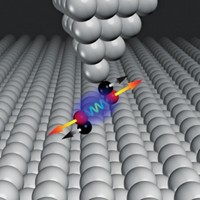Advertisement
Grab your lab coat. Let's get started
Welcome!
Welcome!
Create an account below to get 6 C&EN articles per month, receive newsletters and more - all free.
It seems this is your first time logging in online. Please enter the following information to continue.
As an ACS member you automatically get access to this site. All we need is few more details to create your reading experience.
Not you? Sign in with a different account.
Not you? Sign in with a different account.
ERROR 1
ERROR 1
ERROR 2
ERROR 2
ERROR 2
ERROR 2
ERROR 2
Password and Confirm password must match.
If you have an ACS member number, please enter it here so we can link this account to your membership. (optional)
ERROR 2
ACS values your privacy. By submitting your information, you are gaining access to C&EN and subscribing to our weekly newsletter. We use the information you provide to make your reading experience better, and we will never sell your data to third party members.
Analytical Chemistry
Speedy Nonlinear Optical Analysis
Combining novel laser-probe method with fast statistical evaluation speeds up thin-film analysis
by Mitch Jacoby
January 11, 2010
| A version of this story appeared in
Volume 88, Issue 2
Combining a novel laser-probe method with a fast data-analysis technique enables scientists to rapidly differentiate chemically distinct thin films solely on the basis of subtle differences in the optical properties, according to a research team at Purdue University (Anal. Chem., DOI: 10.1021/ac901832u). Changes in the polarization of light reflected from thin films can serve as a probe of the structure, orientation, and symmetry of molecules at the film’s surface. Yet those measurements can take hours to complete. Purdue’s Nathan J. Begue and Garth J. Simpson report that polarization measurements can now be made in fractions of a second by using a surface-sensitive method they developed known as nonlinear optical Stokes ellipsometry. Time-consuming data analysis based on traditional nonlinear curve fitting likewise can be sped up by orders of magnitude, they say, by combining linear curve fitting with a statistical technique known as principal component analysis. The researchers showed that the new combination can be used to quickly distinguish among monolayer films of four similar dyes. The team plans to apply the technique to probing crystal polymorphism.





Join the conversation
Contact the reporter
Submit a Letter to the Editor for publication
Engage with us on Twitter